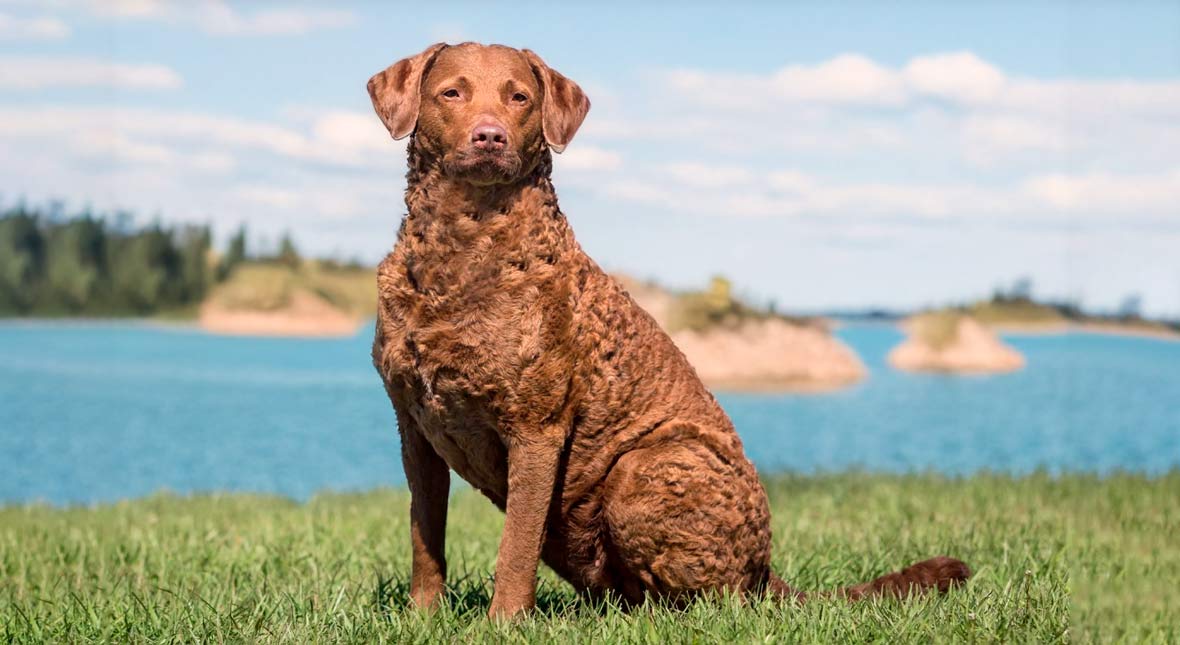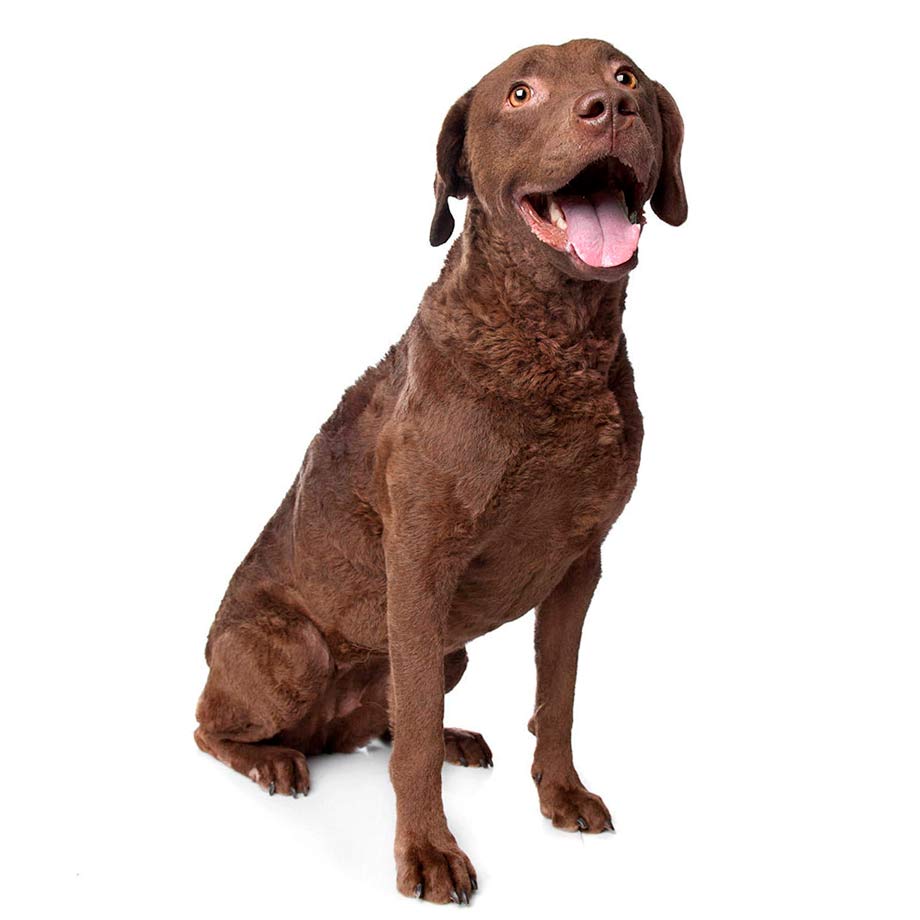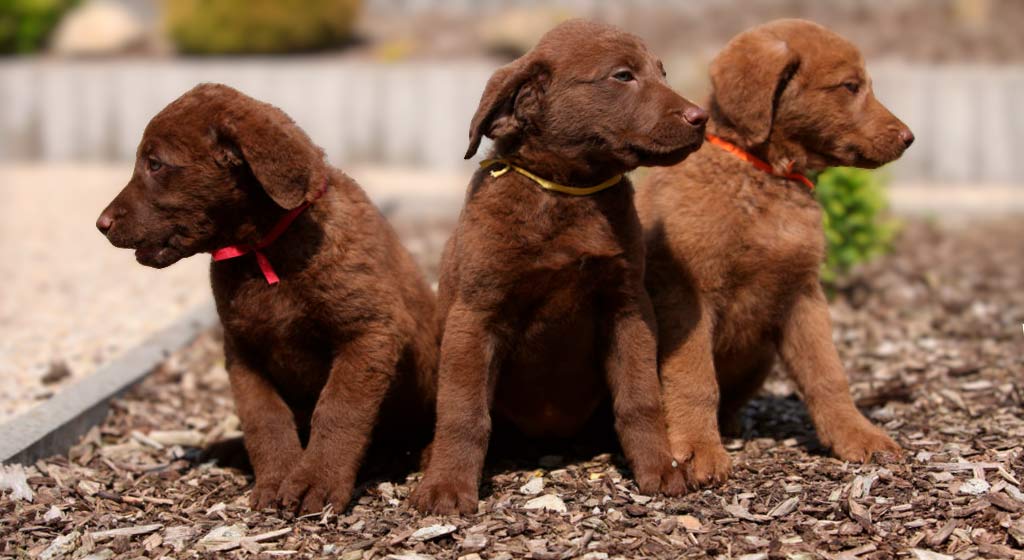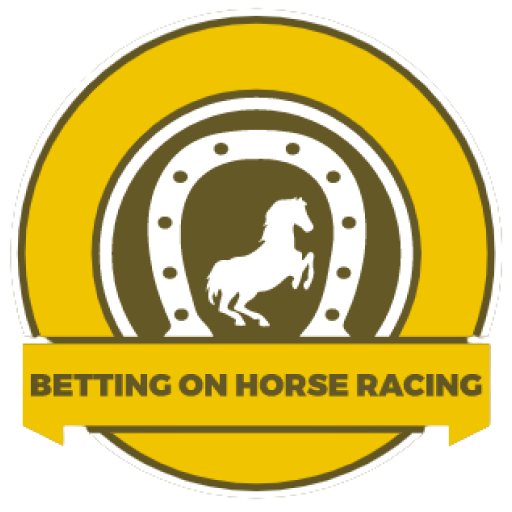We first heard about Chesapeake Bay Retrievers during a visit to a horse farm outside Calgary last spring. The owner, a weathered rancher named Tom, had this stocky, amber-eyed dog trailing behind him as he moved between paddocks. “That’s Bear,” he said, scratching behind the dog’s ears. “Best farm dog I’ve ever had. Doesn’t chase the horses, doesn’t spook at anything, and when we go duck hunting in November, he’ll break ice to get a bird.”
That chat got us curious about what some call Canada’s most underrated working dog. After months of research, talking with breeders and owners, and learning from the Chesapeake Bay Retriever Club of Canada, we’ve found out why this breed is worth a serious look for anyone wanting a loyal, hardworking companion.
What Makes a Chesapeake Different
Key Traits:
- Weight: 55-100 lbs (sources vary)
- Height: 21-26 inches
- Coat: Dense, oily, waterproof double-coat
- Temperament: Independent, loyal, working-driven
- Lifespan: 9-11 years (unfortunately shorter than many breeds)

The Chesapeake Bay Retriever isn’t your typical golden-coated retriever. These dogs were basically forged by survival along Maryland’s icy Chesapeake Bay in the early 1800s. Two Newfoundland puppies rescued from a shipwreck became the foundation, crossed with local spaniels and hounds to create a dog that could pull hundreds of ducks out of freezing water daily.
“The coat is everything,” explains Terry Dancey, a longtime breeder from British Columbia and CBRCC member. “It’s not just water-resistant – it’s almost waterproof. The oil in their coat actually pushes water away, and that woolly undercoat keeps them warm in water that would shock other dogs.”
That famous coat comes in three colours: brown (light cocoa to deep chocolate), sedge (reddish yellow to chestnut), and deadgrass (faded tan to dull straw). It feels slightly oily and has what most owners call a subtle musky smell – not bad, just uniquely “Chessie.”
Size, Temperament, and the “Brown Clown” Personality

These aren’t lap dogs. Males stand 24-26 inches and weigh 75-100 pounds, while females measure 22-25 inches and run 66-88 pounds. But what really makes the Chesapeake dog breed special is their weird mix of complete independence yet total devotion to family.
“They’re not golden retrievers,” warns Bruce Hood, CBRCC president and Ontario breeder. “Chessies think of themselves as equal partners, not servants. They’re incredibly loyal and loving, but they want to understand why you’re asking them to do something.”
This shows up in funny ways. Owners love their dogs’ “smile” – a weird grin where they show their front teeth when happy or submissive. That’s how they got nicknamed “Brown Clown” for their entertaining antics.
Why They Work So Well Around Horses
✅ Calm and Steady Temperament
Anyone who’s tried to walk a skittish terrier past a horse knows the value of composure. The Chesapeake Bay Retriever doesn’t startle easily. Whether it’s the thump of hooves or a tractor backfiring, these dogs hold their ground. That’s not bravado – it’s awareness.
✅ Not Prone to Chasing
One of the most common complaints we hear from barn owners? Dogs that chase. Horses, chickens, cats – you name it. But the Chesapeake retriever’s hunting background is focused on controlled retrieve, not blind pursuit. That makes a big difference when you’re managing a working property.
✅ Voice-Command Ready
Reliable recall can mean the difference between a good ride and a dangerous moment. CBRs are known for being able to follow voice commands at a distance – especially if trained with consistency and reward. If you want a dog who can shadow you off-leash on trail rides or stay when told during turnout, this is your breed.
Bonus Points for Horse Farm Life
🐾 Natural Territory Guardian: The Chesapeake Bay dog doesn’t bark for no reason. But when it senses something off? It lets you know. They’re alert, not aggressive – a sweet spot for rural living.
🐾 Trail Buddy: While no dog should gallop for hours, a fit CBR can keep pace with walking and light trotting horses, especially if trained gradually.
🐾 Working Companion: Whether it’s shadowing you on fence checks or waiting patiently outside the tack room, this is a dog that thrives on having a job.
Balancing Farm Life with Leisure Time
Let’s be honest – by the time dinner rolls around, most farm folks are wiped. After horses are fed, stalls are cleaned, and hay is hauled, there’s not much energy left.
That’s where the quiet downtime kicks in. And these days, that doesn’t just mean falling asleep in a tack room chair.
Rural Canada’s Favourite Way to Unwind: Online Casinos
According to a 2024 Ipsos survey, rural Canadians are embracing online gaming as a way to relax after a long day on the farm. In provinces like Alberta, Saskatchewan, and New Brunswick, online casinos have quietly become part of evening routines.
Many horse owners we spoke to mentioned playing casual hands of blackjack, horse-themed slot games, or checking in on poker tournaments from the comfort of the barn office. The key? Mobile access and built-in deposit limits.
“It’s like a little reward after a 14-hour day,” one breeder told us. “I put my feet up, log in, and play for a few minutes.”
A tip from us: If you trust the Chesapeake Bay Retriever Club of Canada (CBRCC) to vet dog breeders, use the same approach with gambling platforms. Look for licenses, privacy protection, and responsible play tools – just like you’d check a breeder’s health testing and socialization practices.
What to Know About Care and Daily Life
🛁 Coat & Grooming
That thick, oily, waterproof coat is both great and a bit of work. Good news: they don’t need baths very often – washing them too much actually ruins their natural waterproofing. Brush them once a week, and get ready for lots of hair in the spring.
“We tell people to brush weekly and only bathe every few months unless they’re really stinky,” says a Chesapeake dog breeder from Ontario. “Their coat basically takes care of itself, but you have to fight the urge to groom them too much.”
🐕🦺 Exercise Needs
Here’s where horse owners need to be honest. Chesapeakes need serious exercise – 1-2 hours every day plus brain games. A quick walk around the pasture won’t do it.
Swimming, fetch, training, or farm jobs work great. But remember: a tired Chesapeake is a happy Chesapeake.
🐴 Getting Used to Horses
The Chesapeake Bay Retriever Club of Canada says to start young and go slow. Use voice commands, treats, and baby steps. You want a dog that respects horses and stays calm around them – not one that tries to play with 1,200-pound animals.
Health Problems You Need to Know
The CBRCC requires health testing because this breed has some serious issues:
- Exercise-Induced Collapse (dogs suddenly get weak during exercise)
- Hip problems
- Eye disease that causes blindness (usually starts around age 8-9)
- Bloat (stomach twists and can kill quickly)
Here’s a scary fact: one in five Chesapeakes don’t live past five years.
How They Compare to Other “Farm-Friendly” Breeds
| Breed | Strengths | Possible downsides |
|---|---|---|
| Labrador | Friendly, eager to please, proven horse compatibility | May lack boundaries around livestock |
| Border Collie | Intelligent, driven, excellent recall | Can be too intense; might chase horses |
| Jack Russell | Fast, nimble, traditional farm dog | High prey drive, can be unreliable off-leash |
| Standard Poodle | Smart, athletic, good with horses | Coat maintenance intensive |
| Chesapeake | Balanced, focused, weather-hardy | Needs firm training, limited horse farm track record |
When we asked horse people what actually works, Labs and well-bred Jack Russells came up most often. “My lab has been coming to the barn since she was 8 weeks old,” shared one rider. “She likes the horses but isn’t overly interested – perfect.”
Ready to Bring One Home? Here’s Where to Look
Chesapeake Bay Retriever puppies for sale are relatively rare in Canada. The CBRCC maintains a breeder directory, but most reputable breeders have waiting lists.
Start Your Search With:
- Chesapeake Bay Retriever Club of Canada (CBRCC) – The national breed club offers breeder directories and health testing guidance
- The Wave – CBRCC’s quarterly bulletin with breeder announcements
- National Retriever Club of Canada – Additional resources for training and events
Red Flags to Avoid:
- Breeders without comprehensive health testing
- Hunting Chesapeake Bay Retriever puppies available year-round (good breeders have waiting lists)
- No questions about your lifestyle or horse experience
- Reluctance to discuss potential challenges
Current Canadian Breeder Market (2025):
- British Columbia: 2-3 active CBRCC breeders
- Alberta: 4-5 breeders, including established kennels like Westpeake
- Ontario: 4-6 breeders, longest waiting lists
- Quebec: 3-4 breeders, including Susquehanna Chesapeakes
- Atlantic: 3-4 breeders, strong Maritime tradition

Expected wait times: 6-18 months for well-bred puppies from health-tested parents.
Chesapeake Bay Retriever rescue options exist but are limited due to the breed’s small population. Most rescue dogs come through CBRCC networks when breeding dogs retire.
“Every dog is an individual,” reminds a longtime CBRCC member. “Breed gives you a starting point, but socialization, training, and the specific dog’s temperament matter more than anything else.”
For more information about responsible breeders and upcoming litters, visit the Chesapeake Bay Retriever Club of Canada website or contact member breeders directly through their directory. We do not sell dogs or provide breeding services – we only review and share helpful information for prospective owners.
